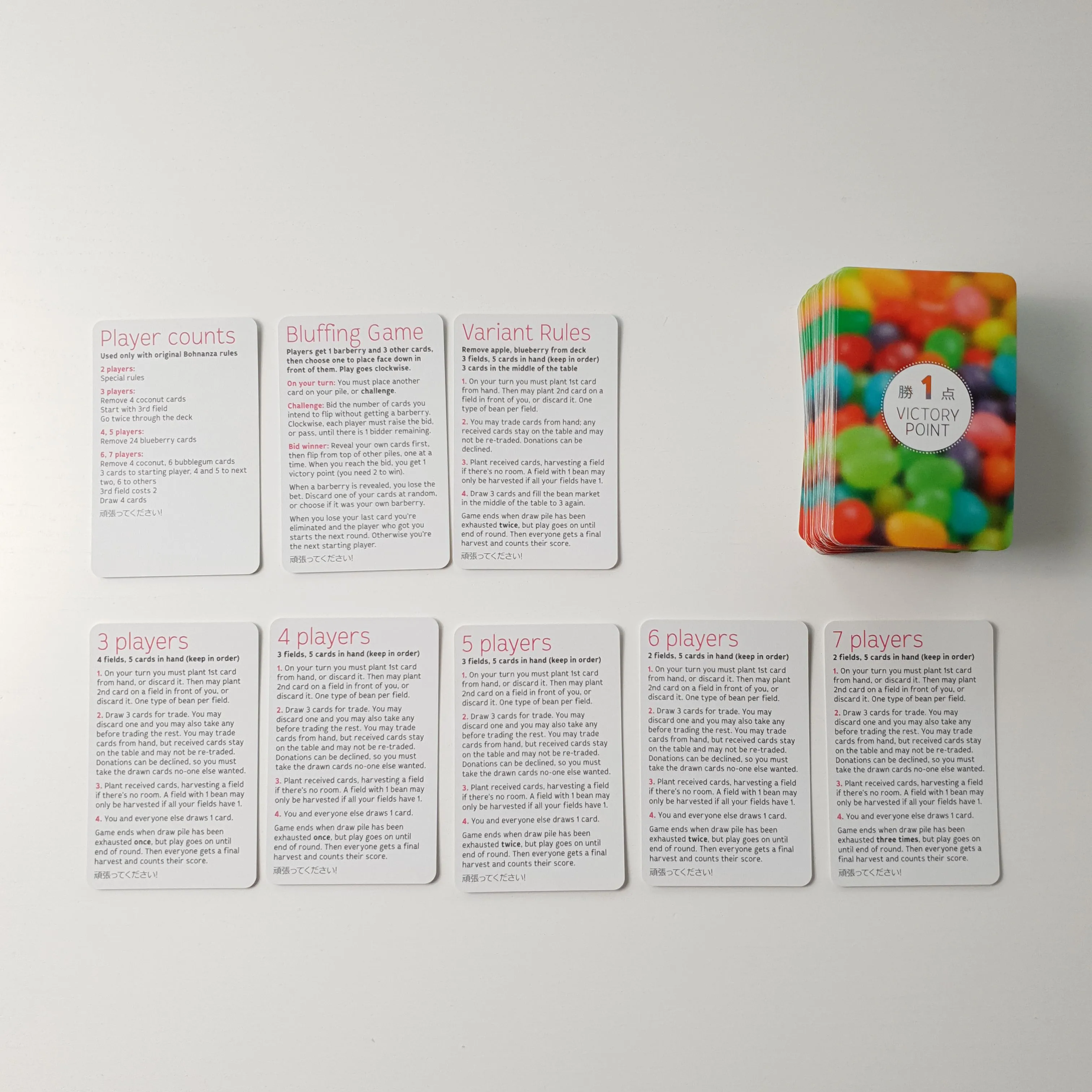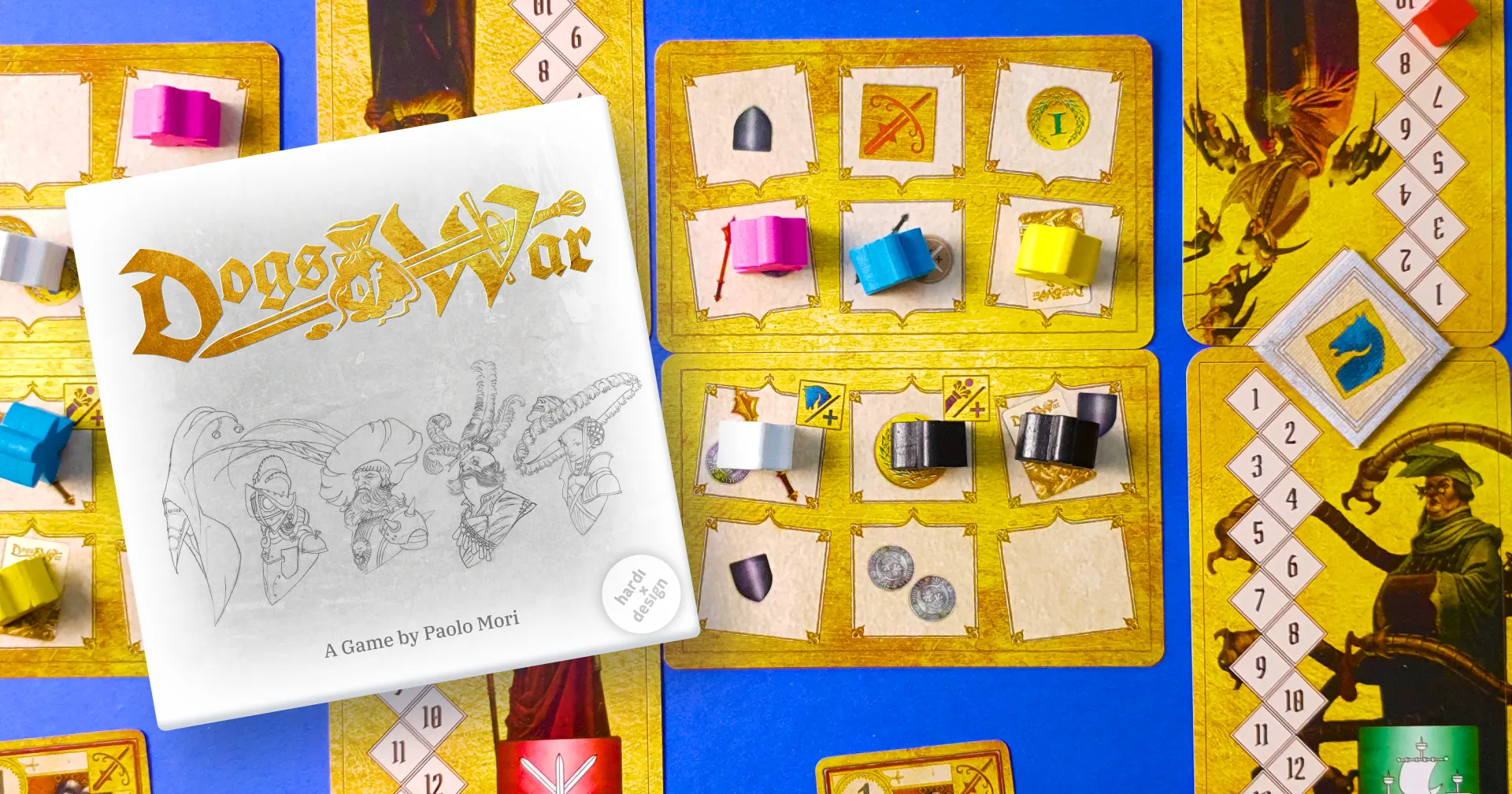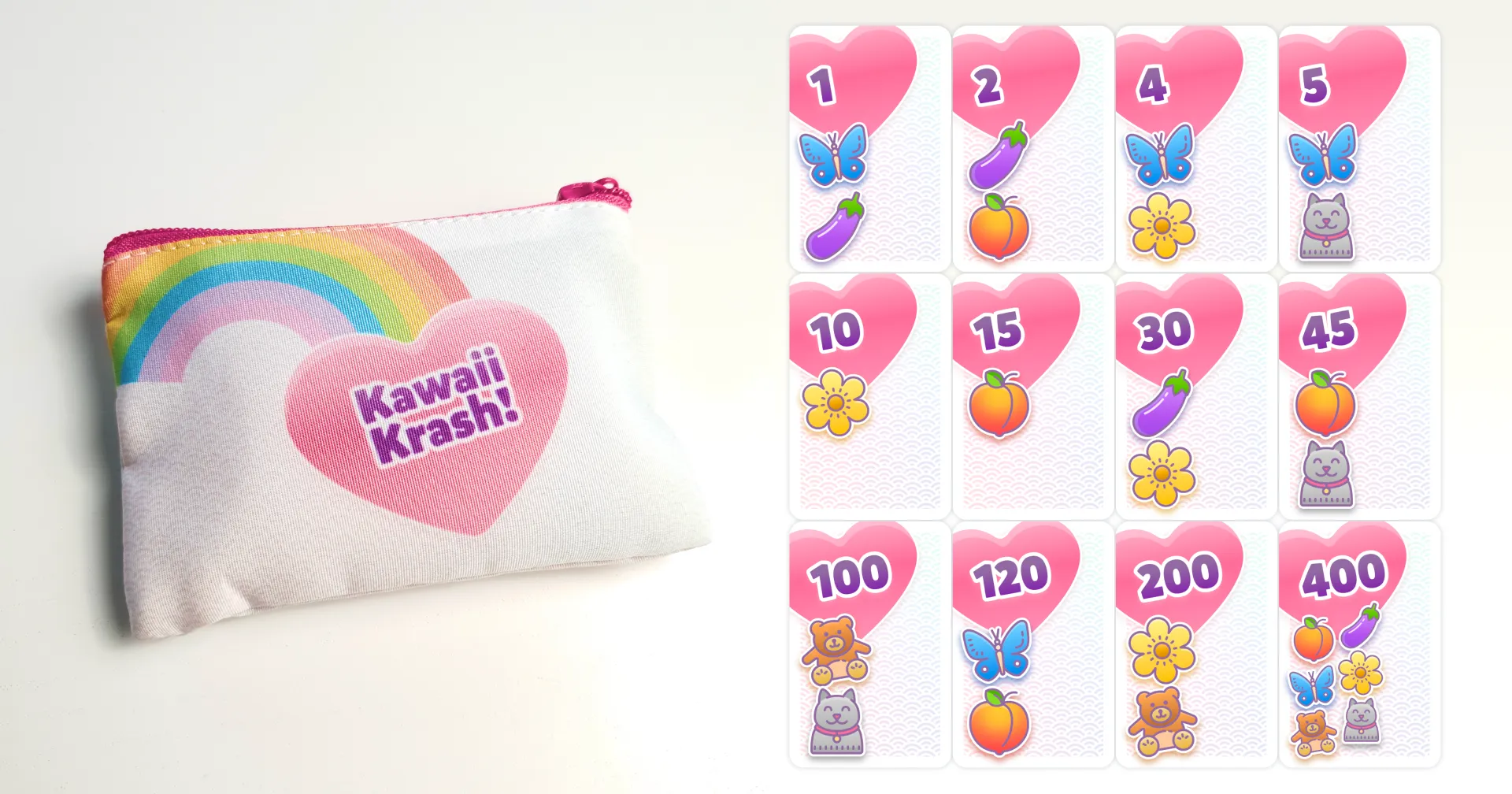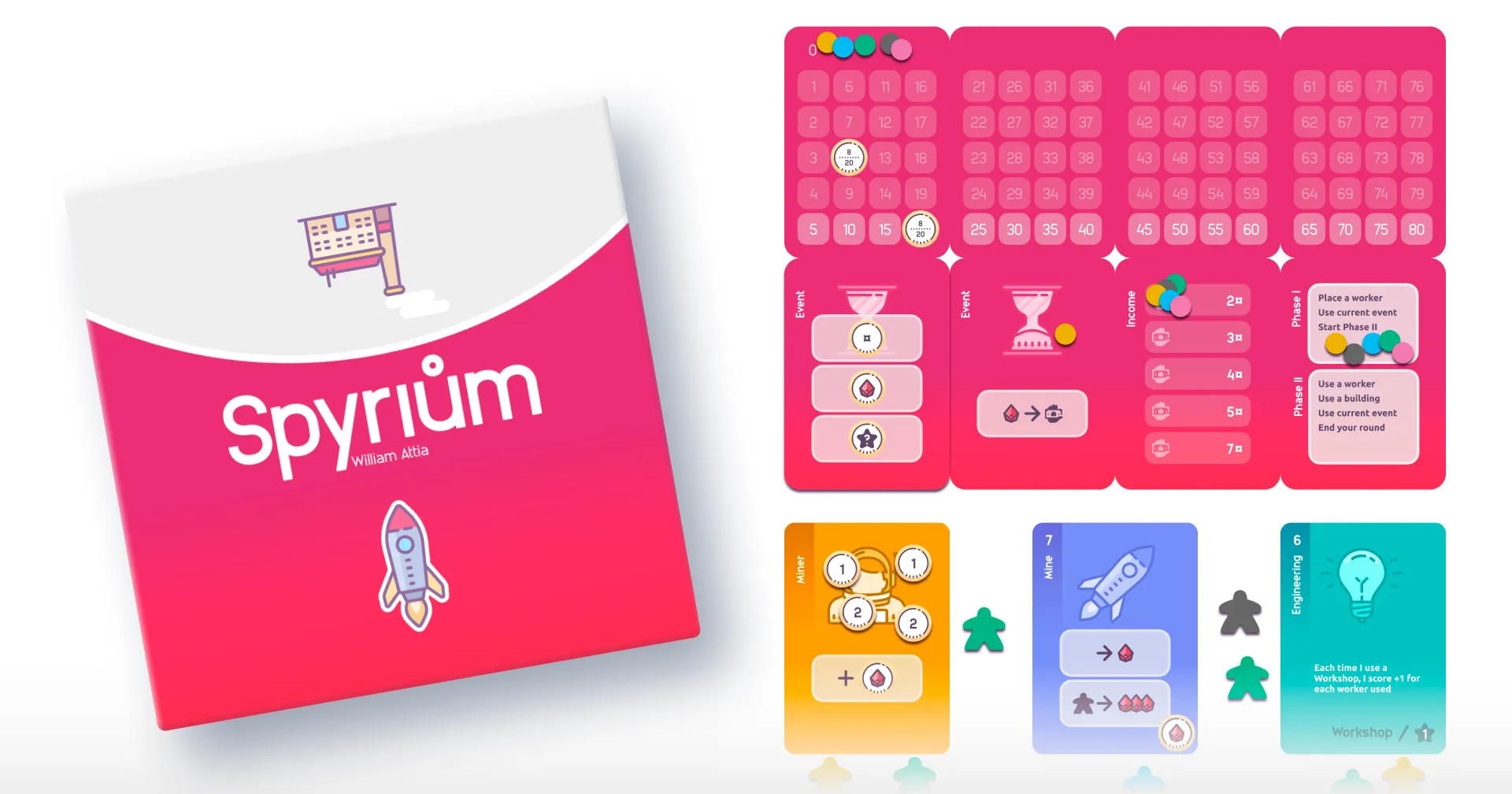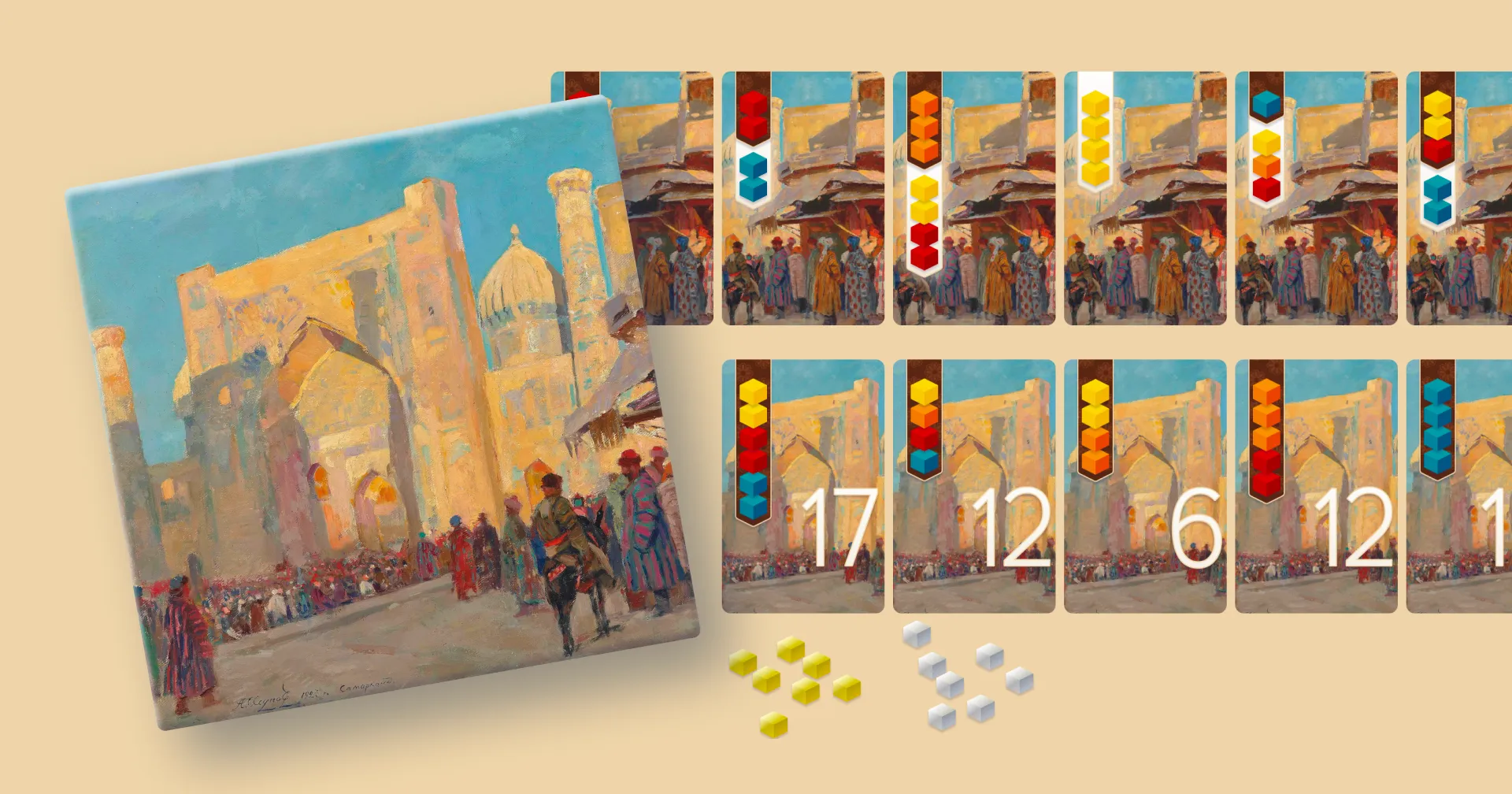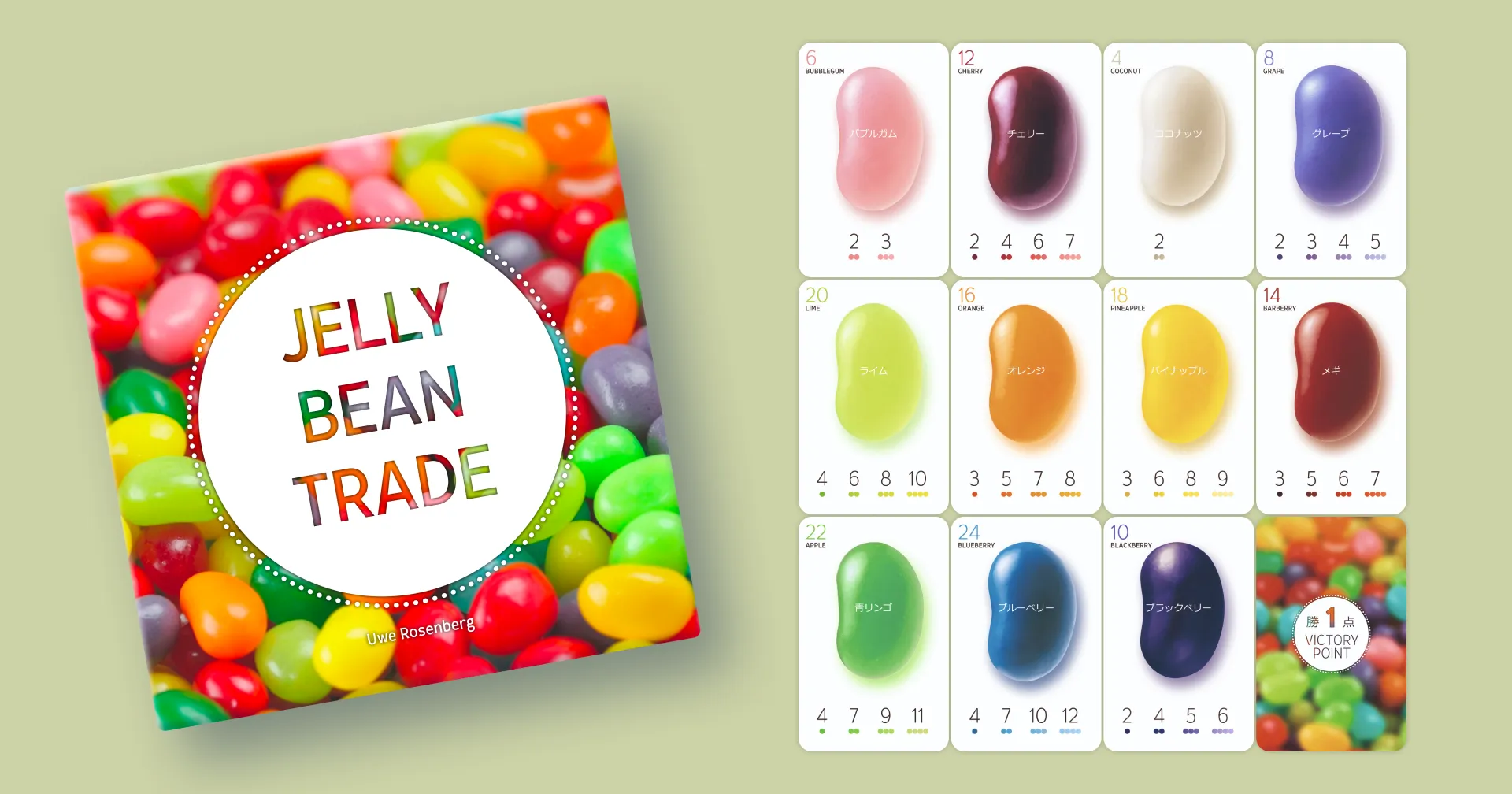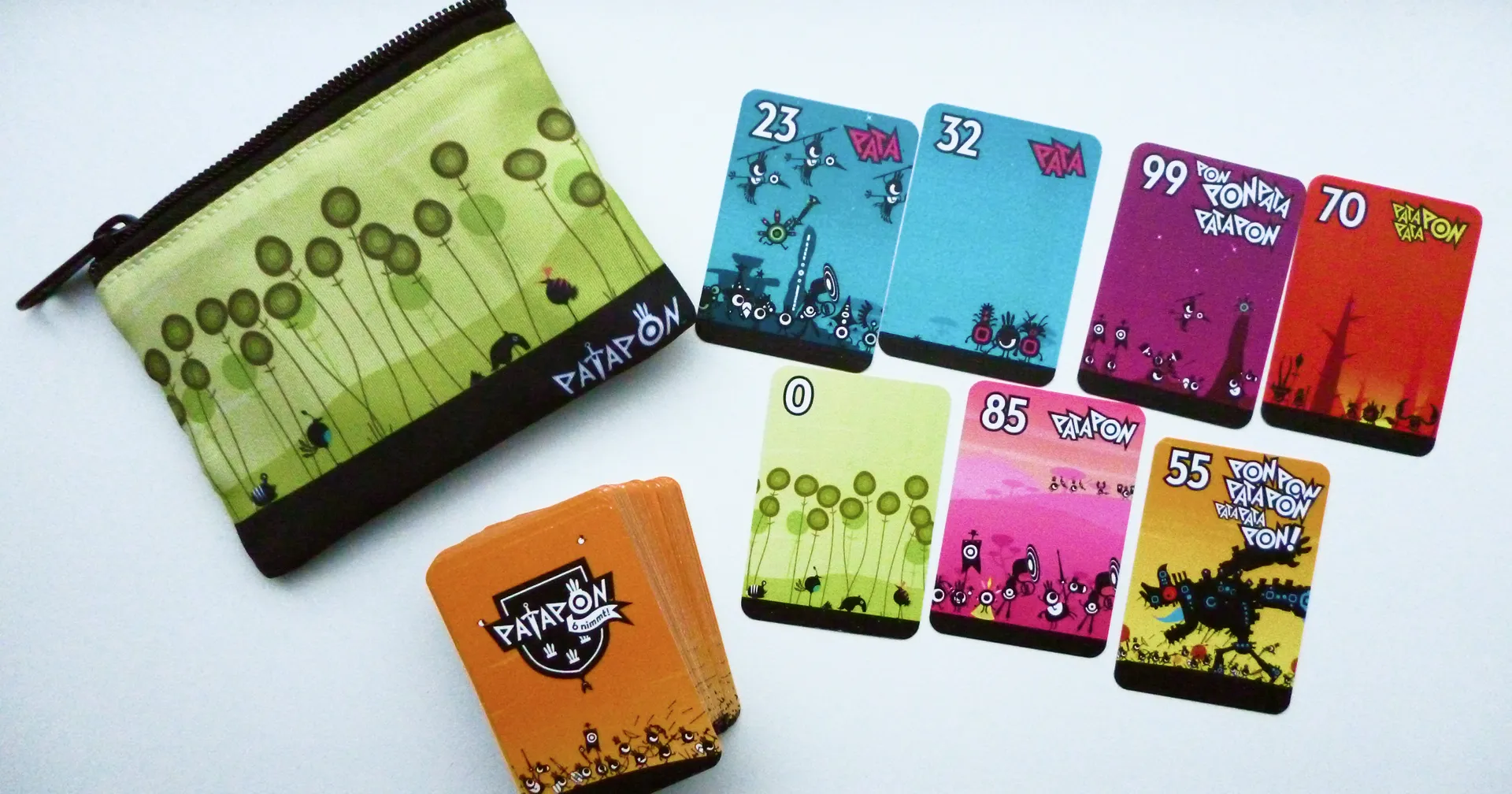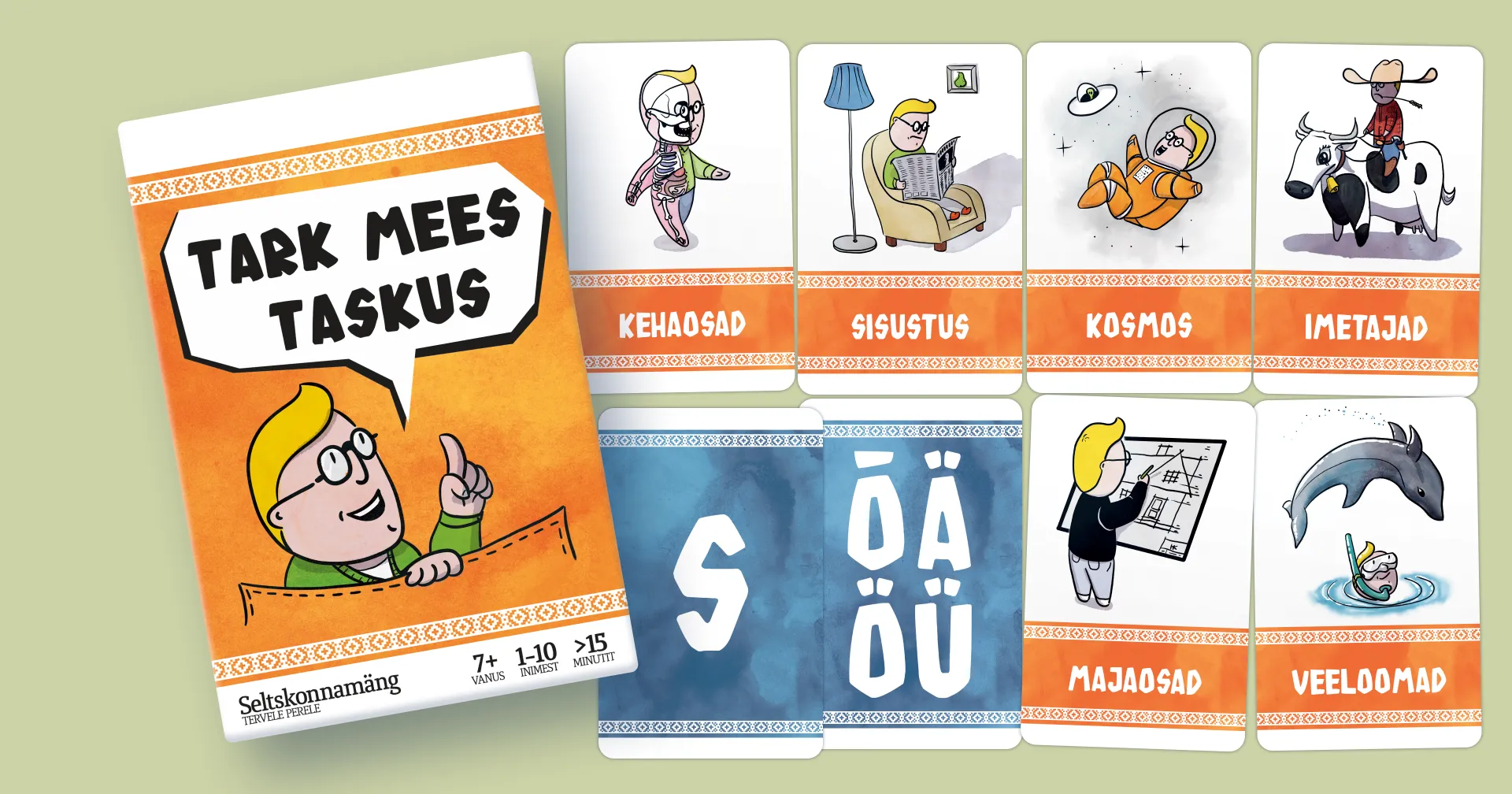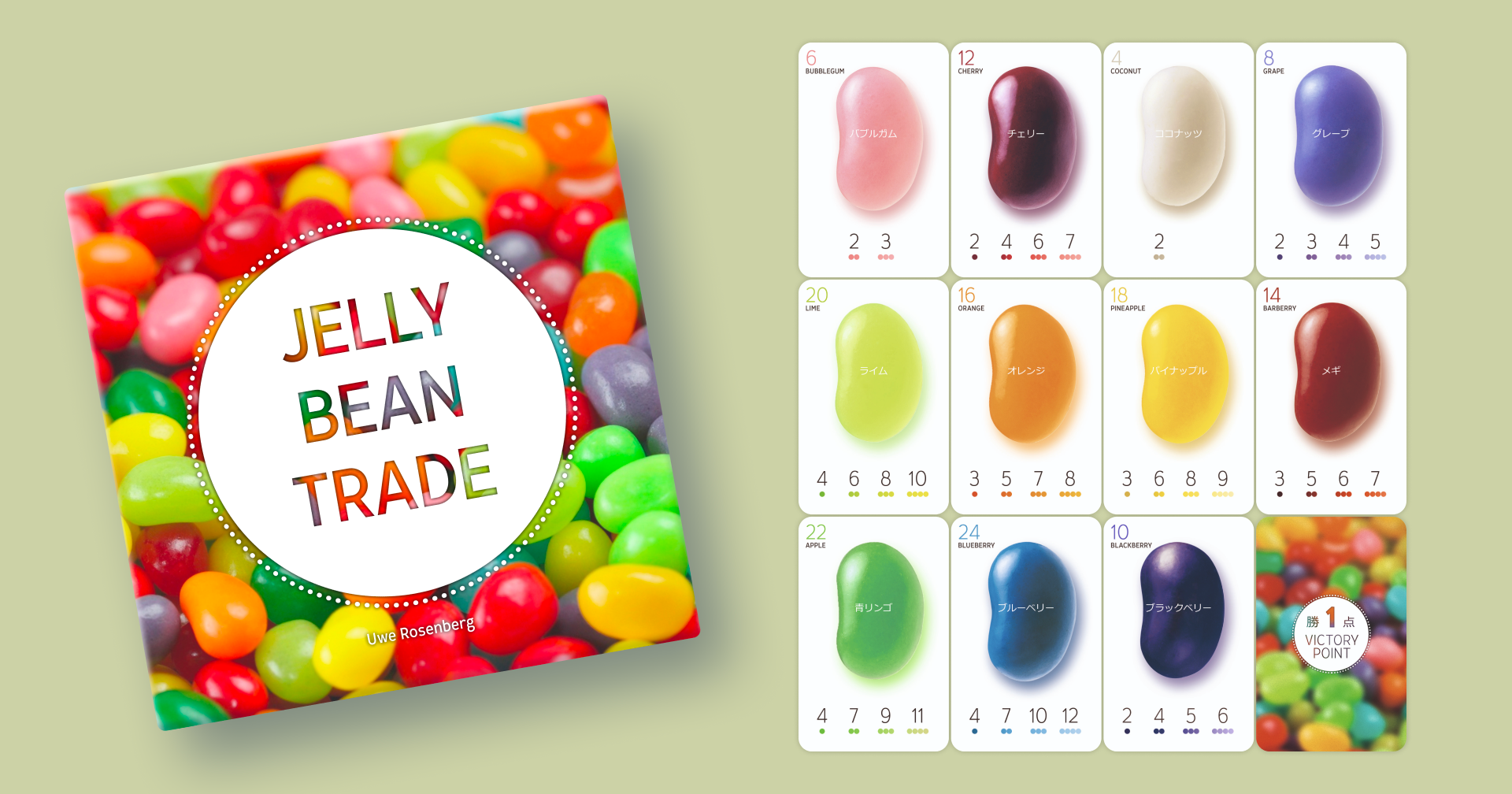
Jelly Bean Trade
Bohnanza is rightfully considered a classic because it’s an easy-to-teach fun game. Two things make it work: the trading, which is always an interactive experience; and the rule that you can’t rearrange your hand which is just genius. Being forced to play cards in order makes you search for opportunities to trade away cards you don’t want, while keeping up appearances that you’re being robbed with these trades 😅.
Why did I re-design an existing board game?
Frankly, the original illustrations are evocative and punny, but the colours are just too harsh on the eyes and more than one player has remarked how cheap the game looks. So my version aims for a more airy, minimal approach that is usually considered more premium. Also, is it too obvious that I like jelly beans?

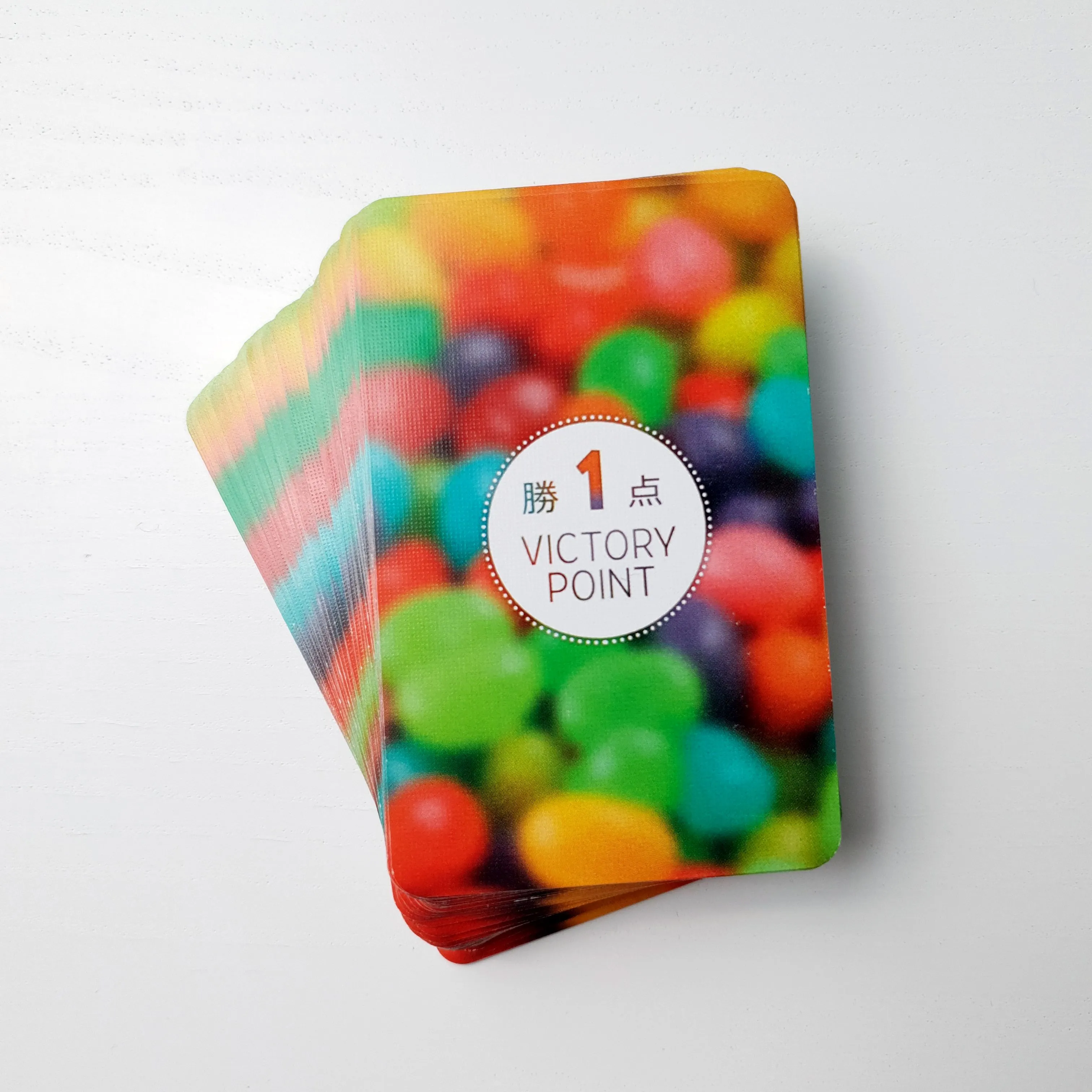
During the game you try to collect and trade your way into stacks of the same flavour, which you can exchange for points at some point. Each flavour has different rates, for example pineapple here gives you 4 points if you trade in a stack of 9 cards. The backs of the cards are used to keep score, hence the 1VP graphic.
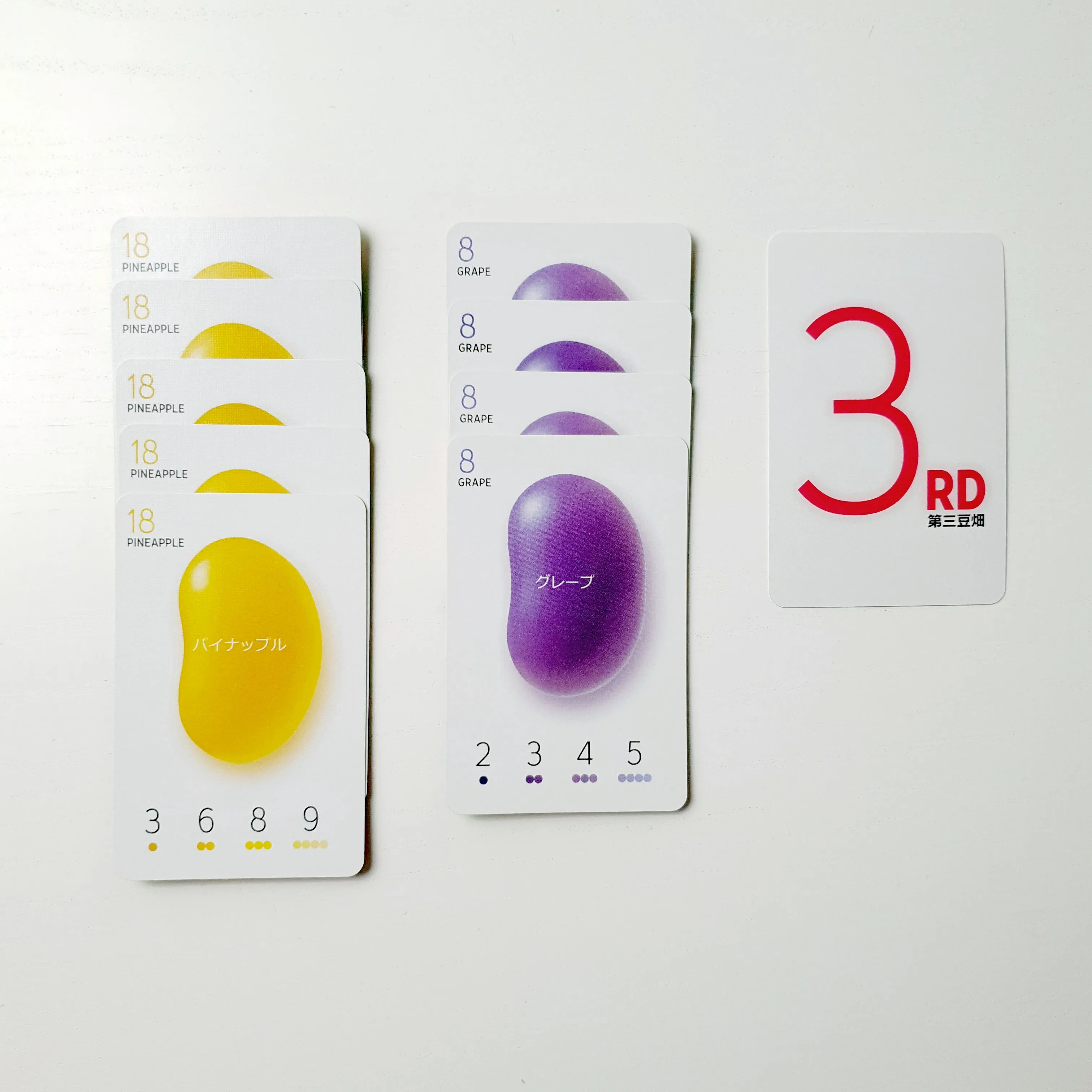
Rules
Bohnanza has been on the market since 1997 and there are numerous expansions and variations available. I especially liked the variant rules from a later edition (“Bohn to be Wild”, another bean pun) that speed up the game a lot.
Since there are small numerical variations at each player count, I just included a summary card for each player count so the setup and explanation at the table is as quick as possible.
Also included is a really simple variant for 3 to 5 players (could’ve been from Bohnanza Fun & Easy), and rules for playing Skull.
